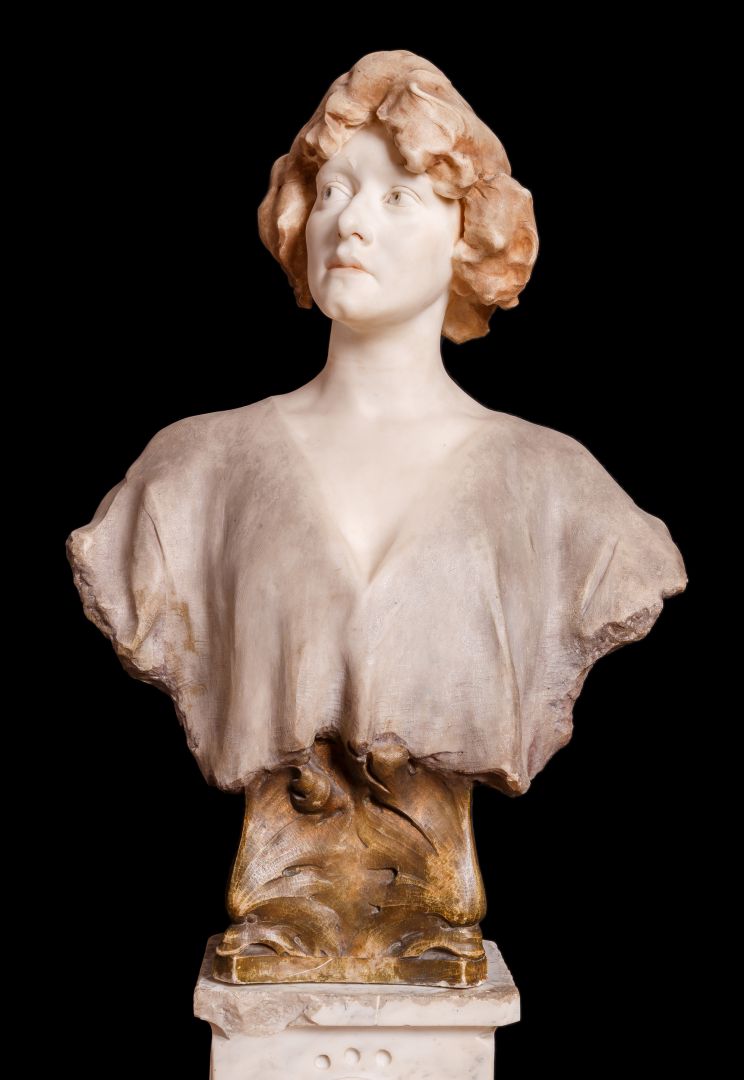Hall 3 - 5. view
Bust of Henrica Szemere
ZALA, GYÖRGY (1858–1937)
Bust of Henrica Szemere, 1896
coloured marble, height: 83.5 cm; marking on the back, under the left shoulder: Zala Gy. 1896
Fine Arts Collection, Inv. No.: 2002.40.
György Zala was one of the most active historical sculptors, whose artworks made for the millennial celebrations not only became inseparable elements of the capital’s image but also made an impact on the shared historical consciousness of Hungarians. Following his studies at Vienna and Munich, he returned to Budapest in 1884 and worked there. He created the Honvéd Memorial in Buda, completed the War of Independence Memorial in Arad, made the equestrian statue of Gyula Andrássy and the memorial of Empress Elisabeth of Austria, as well as the concept that served as the basis for the Millennium Memorial on the Heroes’ Square (1896-1929). As the perception of the turn of the 19th – 20th century shifts over time, so does the assessment of Zala’s works, which can be described as a historical showcase reduced to cityscape elements; although this somewhat diminishes the skills of the portrait artist who was able to capture the characters of Ferenc Deák and Gyula Benczúr so expressively.
The captivating female portrait displayed here is a good representation of how there was a demand at the turn of the century not only for commemorative portraits, but also for decorative and more direct sculptures to be displayed in the homes of wealthy citizens. The marble bust of the wife of Attila Szemere is an exceptionally sculpted artwork and one of the best examples of the Hungarian Art Nouveau style. It is difficult to imagine that this came from the same workshop as Zala’s aforementioned Neo-Baroque works. We can see how the lovely lady figure pensively raises her head and gaze. The soft, collected forms, the hair framing the face and the hint of clothing that turns into acanthus leaves at the base are also emphasized with the use of discrete colouration. Zala more than delivered what was expected of him. The visage of the daughter of the Viennese magnate was carved out in 1896, in the then popular Art Nouveau style. The bust and its pedestal are integral elements of each other.
The sculpture was generously donated to the museum by Henrica Szemere herself as part of the invaluable Szemere legacy, along with a portrait of hers painted by Bertalan Karlovszky.
Based on the description of Gertrud Goda
(In: A Herman Ottó Múzeum Képtára. Edited by: Andrea Pirint. Miskolc, 2004. 71. Cat. No.: 68.)
